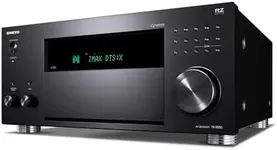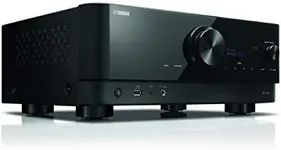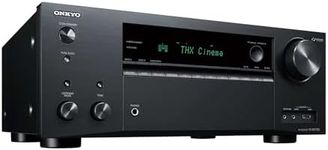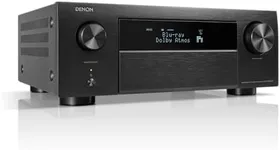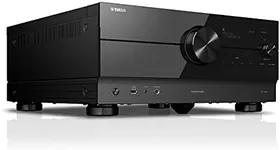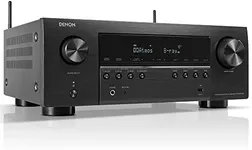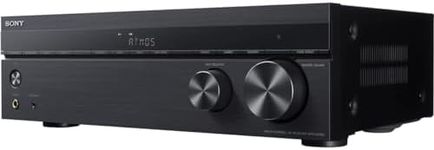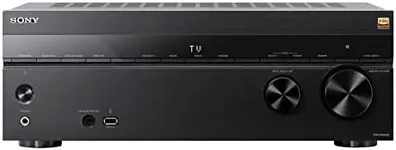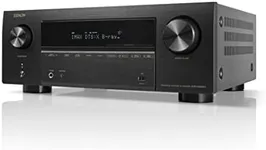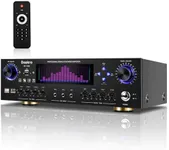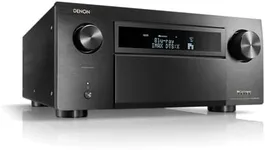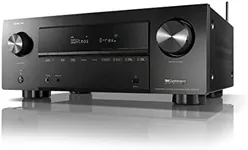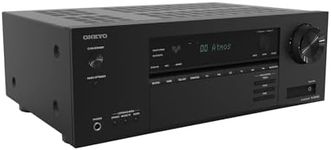Buying Guide for the Best Atmos Receivers
When choosing an Atmos receiver, it's important to consider your specific needs and preferences to ensure you get the best audio experience possible. Atmos receivers are designed to deliver immersive, three-dimensional sound, making them a great addition to any home theater setup. To make an informed decision, you'll need to understand the key specifications and how they impact performance. Here's a breakdown of the most important specs to consider when selecting an Atmos receiver.ChannelsThe number of channels in an Atmos receiver determines how many speakers it can support. This is crucial for creating a surround sound experience. Common configurations include 5.1.2, 7.1.2, and 9.1.4, where the first number represents the traditional surround sound speakers, the second number is the subwoofer, and the third number indicates the height channels for Atmos. If you have a smaller room or fewer speakers, a 5.1.2 system might be sufficient. For larger rooms or more complex setups, consider a 7.1.2 or 9.1.4 system to fully utilize the Atmos capabilities.
Power OutputPower output, measured in watts per channel, indicates how much power the receiver can deliver to each speaker. This affects the loudness and clarity of the sound. Higher power output generally means better performance, especially in larger rooms. For small to medium-sized rooms, 50-100 watts per channel may be adequate. For larger spaces or if you prefer higher volume levels, look for receivers with 100-150 watts per channel or more.
HDMI Inputs and OutputsHDMI inputs and outputs are essential for connecting your receiver to various devices like TVs, gaming consoles, and Blu-ray players. More HDMI ports provide greater flexibility and convenience. Typically, 4-6 HDMI inputs are sufficient for most users, but if you have many devices, you might need more. Ensure the receiver supports the latest HDMI standards (e.g., HDMI 2.1) for compatibility with the newest audio and video formats.
Audio FormatsSupport for various audio formats ensures that your receiver can decode and play different types of audio content. Dolby Atmos is a must, but also look for support for other formats like DTS:X, Dolby TrueHD, and DTS-HD Master Audio. This versatility allows you to enjoy high-quality sound from a wide range of sources. If you primarily watch movies and TV shows, Atmos and DTS:X support are crucial. For music enthusiasts, additional formats like Dolby TrueHD can enhance the listening experience.
Room CalibrationRoom calibration technology helps optimize the sound quality based on your room's acoustics. This feature uses a microphone to measure the sound and automatically adjusts the receiver's settings for the best performance. Common calibration systems include Audyssey, YPAO, and MCACC. If you want the best possible sound without manually tweaking settings, look for a receiver with a robust room calibration system. This is especially useful in irregularly shaped rooms or spaces with challenging acoustics.
Connectivity OptionsModern receivers offer various connectivity options, including Wi-Fi, Bluetooth, and Ethernet. These features allow you to stream music from your devices, access online services, and integrate with smart home systems. If you enjoy streaming music or want to control your receiver with a smartphone app, ensure it has Wi-Fi and Bluetooth capabilities. Ethernet is useful for a stable internet connection, especially for streaming high-resolution audio.
User Interface and Ease of UseA user-friendly interface makes it easier to set up and operate your receiver. Look for receivers with intuitive on-screen menus, clear displays, and well-designed remote controls. Some models also offer voice control and app-based management. If you're not tech-savvy, prioritize a receiver known for its ease of use. This will make the setup process smoother and daily operation more enjoyable.
